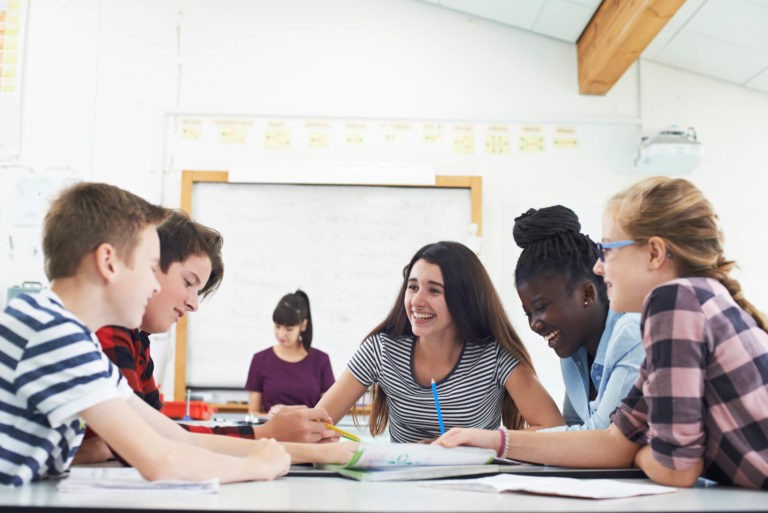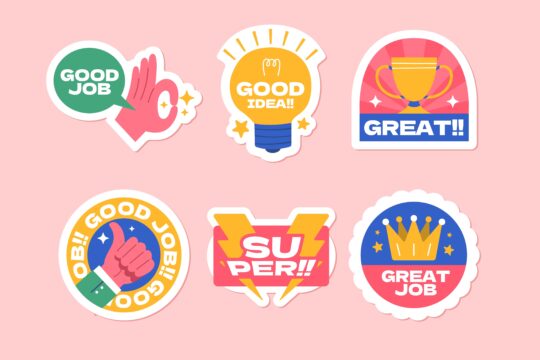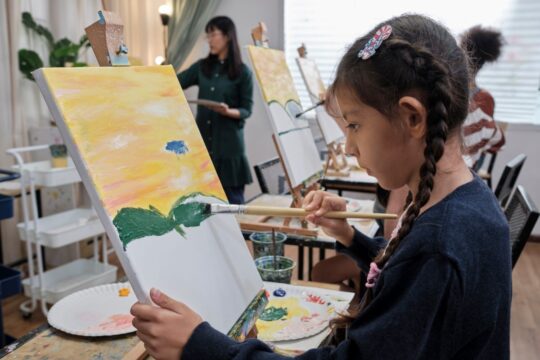What is 21st-Century Learning?
Much of what constitutes high-quality instruction is timeless. The curriculum must be relevant and purposeful. Also, the teacher must have presence in the classroom and use his or her presence to establish positive relationships with students. Building a positive climate and culture is essential to all high-quality learning experiences. With these foundational pieces in mind, it is clear that the framework of 21st-century learning consists of some supports that have remained constant. Yet, a complete analysis of 21st-century learning must include those elements that differentiate 21st-century classrooms from those of the past.
Creativity
Creativity is an essential component of 21st-century learning. Gone are the days when the majority of jobs required employees who retained a plethora of specific content or performed routine processes throughout the day. The goal of learning should be to expand creativity through rigorous and innovative teaching. Sometimes students are boxed in by right/wrong answers that actually stifle creativity.
Much of our instructional strategies are rooted in the Industrial Age when these fact- and process-driven skills dominated the workforce. Education must evolve with the workforce. As such, employers need thinkers who analyze problems and think of creative solutions that maximize productivity, efficiency, and product quality. Creativity leads to innovation. Education must be innovative to prepare students to be successful in an ever-changing innovative, global society.
Collaboration
It would be remiss to discuss an effective 21st-century classroom without discussing collaboration. Effective employees understand individual accountability in a team setting in which many projects are assigned to a group. Individuals need to understand the need to contribute to the group and develop a sense of accountability to other group members. Collaborative discussion about the given project should require debate and higher-level thinking. The final products should not be concrete with one potential solution, but rather should focus on innovation and creativity. The goal should be to cover the same required standards, but in a more holistic manner.
Critical Thinking
Work in a 21st-century classroom should require critical thinking and innovation. Gone are the days when preparation for the future could mainly center on absorbing factual information. Our global society is constantly changing. In fact, many of the jobs we are preparing our students for do not exist in the present. Therefore, we must teach students to think and adapt to various scenarios. With information always readily available, knowing a particular piece of information will not be essential, but being able to think critically and analyze a problem at hand certainly will be.
Communication
Finally, effective, timely, and precise communication must be modeled in any school. Effective communication is a hallmark of an effective organization regardless of time period. In a 21st-century classroom, students must learn how to effectively communicate through written forms (both traditional and online). Students need to learn how to present themselves in a professional and polished manner through spoken and written communication. Further, 21st-century classrooms should include debate with order and courtesy. Active listening and follow up should be given focus as an assessment. This instruction will prepare students to become contributing members of the workforce and global society.
Strategies for Bringing 21st-Century Learning into Your Class
Project-Based Learning
Project-based learning is a research-based strategy that introduces authenticity and relevance to any classroom. In order to utilize this strategy effectively, teachers must unpack essential standards and group them for use in project-based assignments. Instead of viewing the curriculum as an overwhelming amount of individual standards and content, teachers must be open to thinking which standards can be taught simultaneously. Furthermore, project-based learning lends itself to cross-curricular instruction, allowing multiple teachers to work collaboratively or a self-contained teacher to cover content from multiple disciplines at the same time.
In creating a project-based assignment, the teacher should not give too much information upfront or make the assignment too restrictive. Student choice and innovation are critical. Next, have the students formulate hypotheses and test possibilities. Students should be comfortable making mistakes. Choosing a path that does not work and switching directions can lead to more valuable learning experiences.
An example of a solid project-based assignment in geometry would be to have students draft plans, supply lists, and cost estimates for constructing an addition to a house. Students will need to work through area, surface area, and consider angles. Students would need to use this information to decide on the amount of materials and arrive at cost estimates. Feedback and discussions could be used to help students consider what pieces might be overlooked.
Authentic Writing Assignments
Give the students authentic and relevant writing assignments. Further, have students present about their findings. Effective and timely written and verbal communication skills are certainly essentials in a 21st-century classroom. Consider assigning the students the role of a budding journalist. Students will need to organize and analyze information. This assignment incorporates creativity while helping students become independent thinkers.
In designing this assignment, you can incorporate student choice by doing a survey of the students’ interests to assign articles based in student choice. Students work harder and perform at higher levels when given assignments that are enjoyable. Later, have the students do a presentation about their article. Teachers can utilize a learning management system to have the students record and edit the presentations to further add authenticity. The key is that use of technology should enhance instruction and learning. Technology should not be viewed as a last minute addition.
Cooperative Learning
In order for a student to become successful, he or she is likely to have to become a contributing member of a team. Students must learn to respect and value one another while working through any differences. In designing cooperative learning assignments, teachers should consider ways to ensure the contributions of all students. Further, teachers can think of ways to strengthen student self-efficacy. These assignments should be deep and require innovation. Incorporate team reflection in these assignments.




